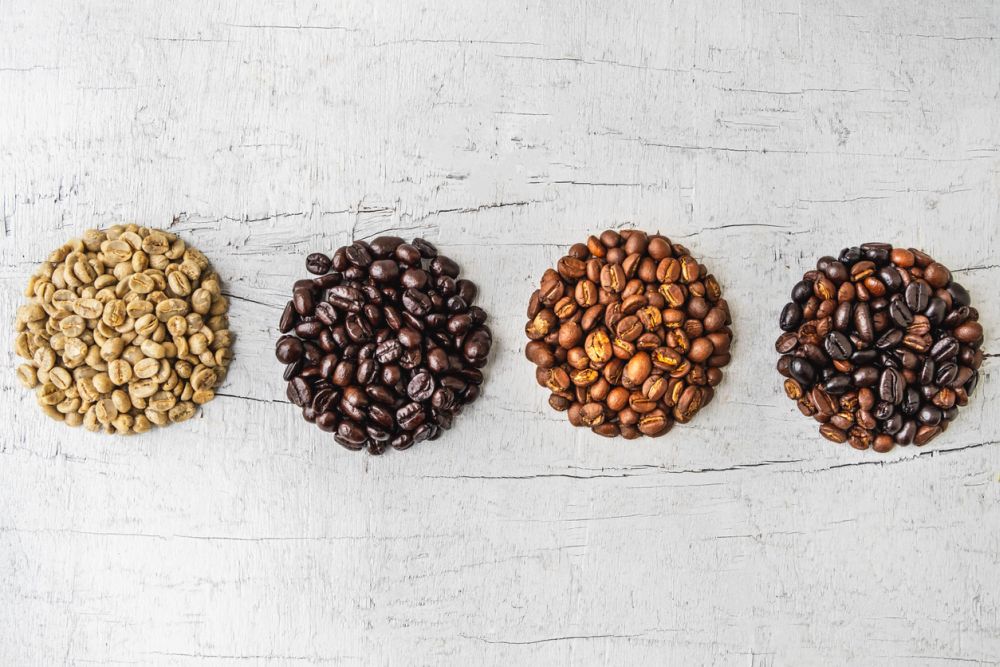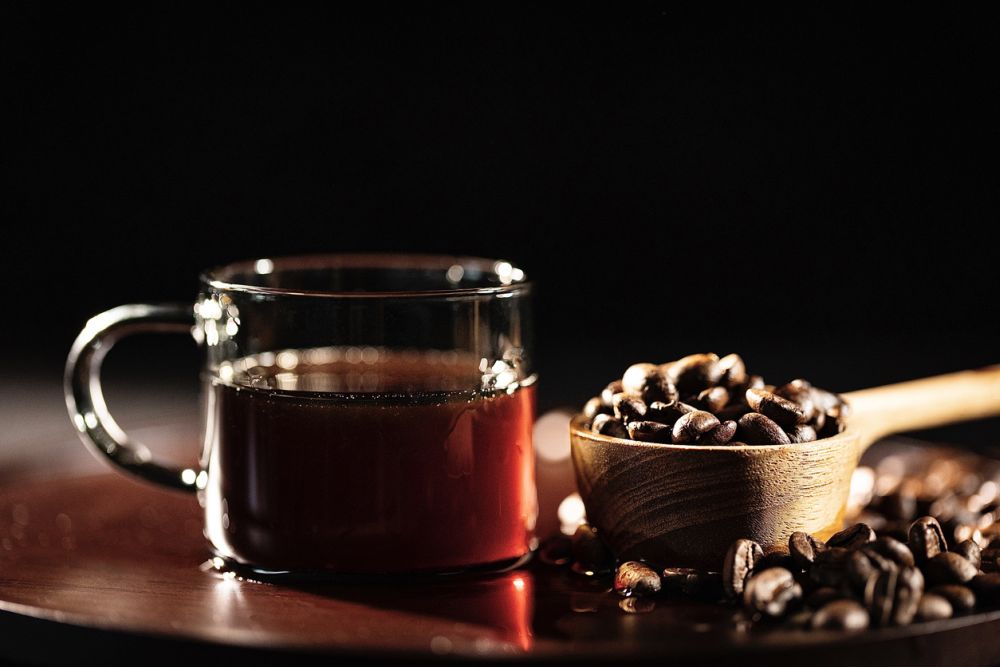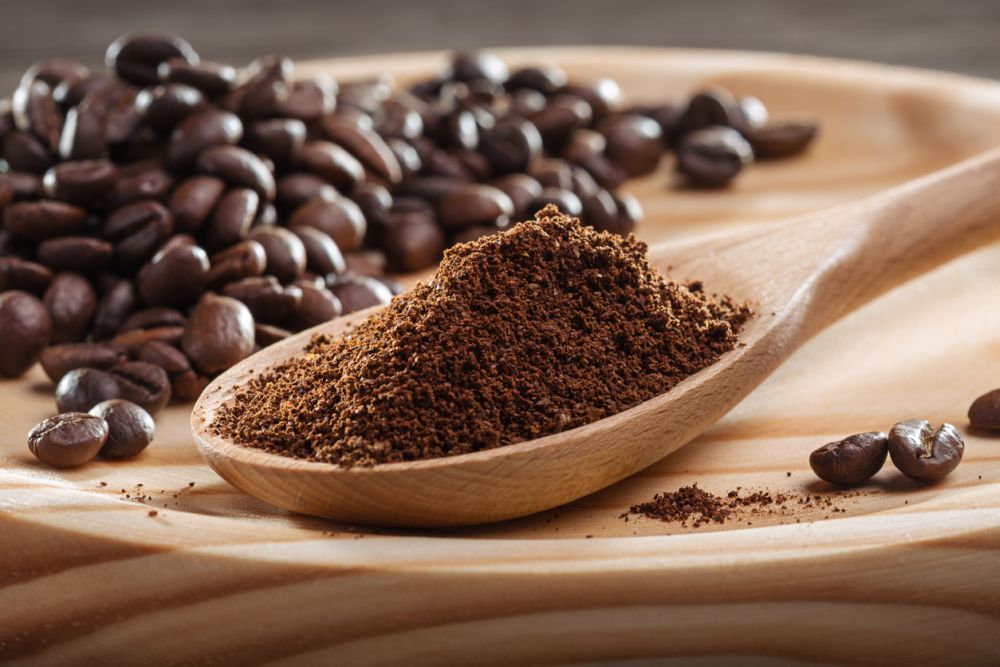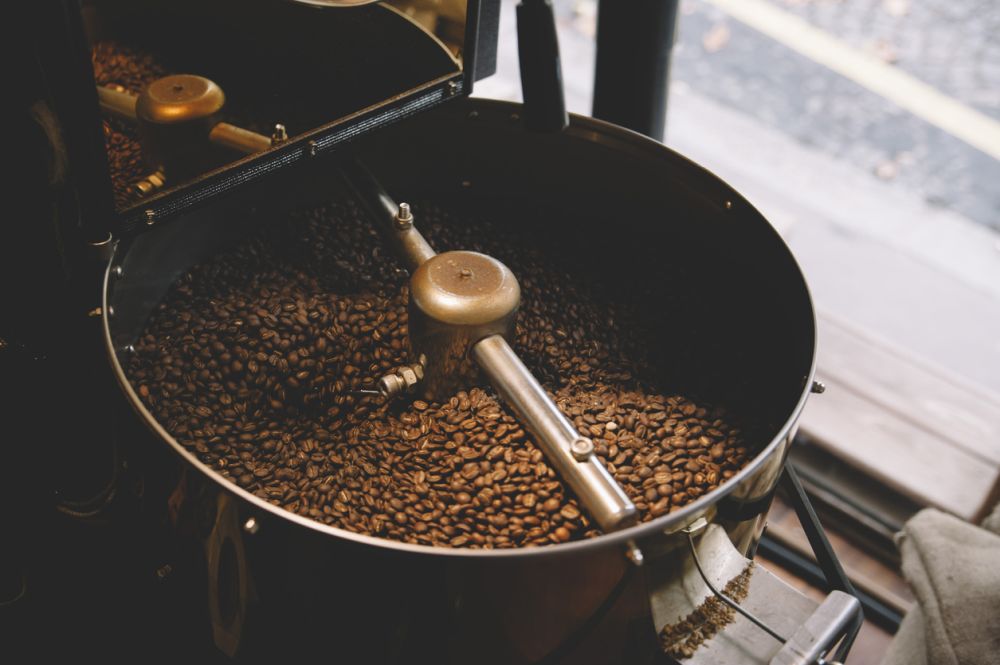When you’re at the supermarket and must choose between a bag of light roasts and a bag of dark roasts, you can’t help but ask yourself – does coffee roast affect caffeine?
The answer will surprise you. And in today’s article, we will be discussing how roasting affects caffeine in your coffee.

We all know that coffee contains caffeine, which is a stimulant. To get an energy boost is why we drink coffee.
Caffeine works by blocking adenosine receptors in the brain, making us feel more alert and awake.
So, does coffee roast affect caffeine?
This article describes how the roasting process affects coffee, the chemistry of caffeine, why some people think that dark roast coffee is stronger, and why other people believe that light roast coffee is stronger. Lastly, we are sharing some tips on how to increase the caffeine intake in your coffee.
Table of Contents
- Does coffee roast affect caffeine?
- How roasting affects coffee
- The Chemistry of Caffeine
- Why some people think dark roasts are stronger
- Why other people think light roasts are stronger
- How to make your coffee richer in caffeine
- FAQ
- Closing thoughts
Let’s start by understanding if the coffee roast affects caffeine.
Does Coffee Roast Affect Caffeine?
The answer is no, roasting doesn’t affect the caffeine levels in coffee beans. But roasting changes the flavor of the coffee. Lightly roasted beans have a more acidic and brighter taste, while dark roasted beans are richer and fuller.
The caffeine levels in coffee also depend on the type of bean. For example, Robusta beans have more caffeine (up to 2.5% caffeine) than Arabica beans (up to 1.7% caffeine). So if you’re looking for a natural energy boost, make sure to get coffee made with Robusta beans.
In the next section, discover how roasting affects coffee.
How Roasting Affects Coffee

There are two primary coffee roast levels: light roasts and dark roasts. Both are the results of roasting coffee beans at different temperatures for a different amount of time.
When coffee beans are roasted, the following events take place:
- The flavor profile of the coffee changes due to the increased caramelization and oils released from the bean.
- As the roast darkens, the character of the bean’s origin gets suppressed in favor of more smokey, chocolatey, and nutty flavors.
- Coffee beans expand as they are roasted, with dark roast beans being more than twice the size of light roast beans.
In the next section, learn about the chemistry of caffeine.
The Chemistry of Caffeine
For this article’s topic, there are two things you need to understand about caffeine:
- Caffeine needs time to decompose since pure anhydrous caffeine has a melting point of 435 – 460°F (235 – 238°C). It decomposes at 285°C (545°F), which is higher than the temperature at which coffee is roasted, even the darkest roasts (464°F or 240°C).
- Pure caffeine tastes bitter, and coffee beans contain around 1% of this compound, which is why many people drink coffee with milk.
In the next section, find out why some people think that dark roast coffee is stronger than light roast coffee.
Why Some People Think Dark Roasts Are Stronger
Many people believe that dark roasted coffee beans have more caffeine. But given the three events that happen to roasting coffee and the chemical properties of caffeine, which we discussed in the earlier sections, that belief is false.
People who believe that dark roasts are stronger take into account the stronger flavor and volume of the coffee beans, as well as whether they’re Arabica or Robusta beans.
Let’s start with the stronger flavor of dark roast coffee.
Stronger Flavor

If dark roast coffee has a stronger flavor than light roasts, it must be because it has more caffeine. But that’s false.
What you feel when drinking dark roast coffee are the flavors created by the roasting process. The bitter taste might give you the impression that the coffee has more caffeine, but that’s not the case.
Dark roast coffee has harsher flavors simply because the beans have been roasted for longer and at higher temperatures.
In the next section, let’s study the volume of dark roast coffee.
Volume
During the coffee roasting process, there are two moments when the coffee beans significantly change in volume: the first and second crack.
If the coffee brewer allows the beans to crack only once (the first crack), they are making light roast coffee. But if the coffee roaster permits the beans to crack twice (the first and second crack), they are making dark roast coffee.
Compared to the first crack, beans get larger after the second crack. So people mistakenly think they are getting more caffeine. This isn’t true since what you’re feeling is the size increase of the bean and not any changes in caffeine levels.
When buying a bag of coffee beans, you’re always paying per weight and not per unit of volume. If you place two bags of coffee beans side by side with the same weight, you’ll notice that the bag of dark roast is bigger.
In the next section, let’s check out the connection between dark roast coffee and Arabica and Robusta coffee beans.
Arabica vs Robusta
It wouldn’t be wrong to assume that dark roast coffee is stronger than light roast coffee. It has nothing to do with the roasting process but the bean type.
Lighter roasts are usually Arabica beans, while dark roasts are usually Robusta beans. And, as mentioned in an earlier section, Robusta beans have more caffeine (up to 2.5% caffeine) than Arabica beans (up to 1.7% caffeine).
As you probably know, Arabica coffee beans have about half the caffeine content of Robusta beans. And it’s this fact that explains why people who drink dark roast coffee are often mistaken in thinking that they get more caffeine with each cup.
They’re drinking coffee with higher caffeine levels because they’re drinking a completely different type of coffee bean.
In the next section, find out why other people believe that light roast coffee is stronger than dark roast coffee.
Why Other People Think Light Roasts Are Stronger
In contrast to what we discussed in the previous section, there are some people that think light roast coffee is stronger than dark roast coffee. This is related to the volume and mass of the beans, as well as the caffeine properties.
Let’s start with the volume of light roast coffee.
Volume

Coffee beans expand when roasted, and darker roasts get bigger because they are aerated.
Since light roast coffee beans don’t expand as much as dark roast coffee beans, some people believe they have more caffeine because they’re much denser.
If you grind a pound of light roast coffee beans and a pound of dark roast coffee beans, you’ll obtain the same volume of coffee grounds.
In the next section, check out the mass of light roast coffee beans.
Mass
During the roasting process, light roast coffee beans lose between 15 and 20% of their mass. But that’s just water, volatile oils, and other aromatic compounds but not caffeine.
In the next section, check out the caffeine properties of coffee.
Caffeine Properties
Caffeine either evaporates or decomposes during the roasting process. As we discussed in an earlier section, caffeine decomposes at around 545° F (285° C) and doesn’t start melting until around 435 – 460°F (235 – 238°C).
There are only two types of roast that require such temperatures: French Roast (464°F or 240°C) and Italian Roast (473°F or 245°C)
Not even French roast and Italian roast coffee beans are roasted long enough to cause the caffeine to decompose or evaporate.
In the next section, find out how to increase the caffeine levels of your coffee.
How to Make Your Coffee Richer in Caffeine
Now that you know that coffee roasts don’t affect the amount of caffeine, you’re probably wondering how to get more caffeine from your coffee beans. Here are some tips:
Let’s start with the coffee grind type.
Use Finer Grinds

The grinding type has a huge impact on the amount of caffeine in your coffee beans. And finer grinds yield coffee beans with more caffeine. However, using finer grinds also means a higher chance of getting over-extracted coffee, so it will be overly bitter.
In the next section, discover the connection between caffeine and coffee brewing time.
Increase the Brewing Time
If you want more caffeine in your coffee, you should increase the coffee-brewing time. Longer brewing time means more time for the water to extract all those delicious compounds from the coffee beans, including caffeine.
In the next section, discover the connection between caffeine and coffee-to-water ratio.
Use a Higher Coffee-to-Water Ratio
If you want more coffee in your cup, use more coffee beans or less water. The chamber where you add the coffee grounds has a standard size, so it’s usually easier to use less water.
In the next section, discover the connection between caffeine and coffee brewing method.
Try a Different Brewing Method
If you’re looking to up your caffeine game, consider using a different brewing method. For example, espresso and Turkish coffee give more caffeine per cup than drip coffee or French press coffee.
The next section gives you more information about coffee roasting and how it affects caffeine.
FAQ

This section gives you simple answers to common questions about coffee roasting and how it affects caffeine.
Does roasting coffee affect caffeine content?
No, coffee roasts don’t affect the amount of caffeine in coffee beans. Caffeine is a naturally occurring compound found in coffee beans, which is unaffected by the roasting process.
Does caffeine decrease with roasting?
No. Caffeine decomposes at higher temperatures (285°C or 545°F) than dark roast coffee (464°F or 240°C). So caffeine doesn’t decompose or evaporate during the roasting process.
Do coffee beans lose caffeine when roasted?
No. Coffee beans lose around 18% of their mass during the coffee roasting process. That mass is made of evaporating water, oils, and volatile compounds. But caffeine doesn’t evaporate.
How does roast affect coffee?
Coffee is mostly roasted to give it flavor. And the roast level affects the complexity and intensity of that flavor. Regardless of the degree of roasting, the caffeine levels remain the same.
Which coffee roast has more caffeine?
Robusta coffee contains twice the amount of caffeine (up to 2.5% caffeine) compared to Arabica beans (up to 1.7% caffeine). And Robusta coffee beans are typically roasted dark to hide their strong bitter flavors.
The next and final section summarizes the entire article on coffee roasting and how it affects caffeine.
Closing Thoughts
We hope that we finally settled the debate on whether or not coffee roasts affect caffeine levels in your next cup of joe.
While many different factors make a perfect cup of coffee, from the grind to water temperature and extraction time, it’s important to understand that your roast level doesn’t affect your caffeine content.
So rest assured – no matter what roast you use, your caffeine levels will remain the same!.
Do you have any tips for increasing the caffeine intake in coffee? Share them in the comments section below!
Leave a Reply